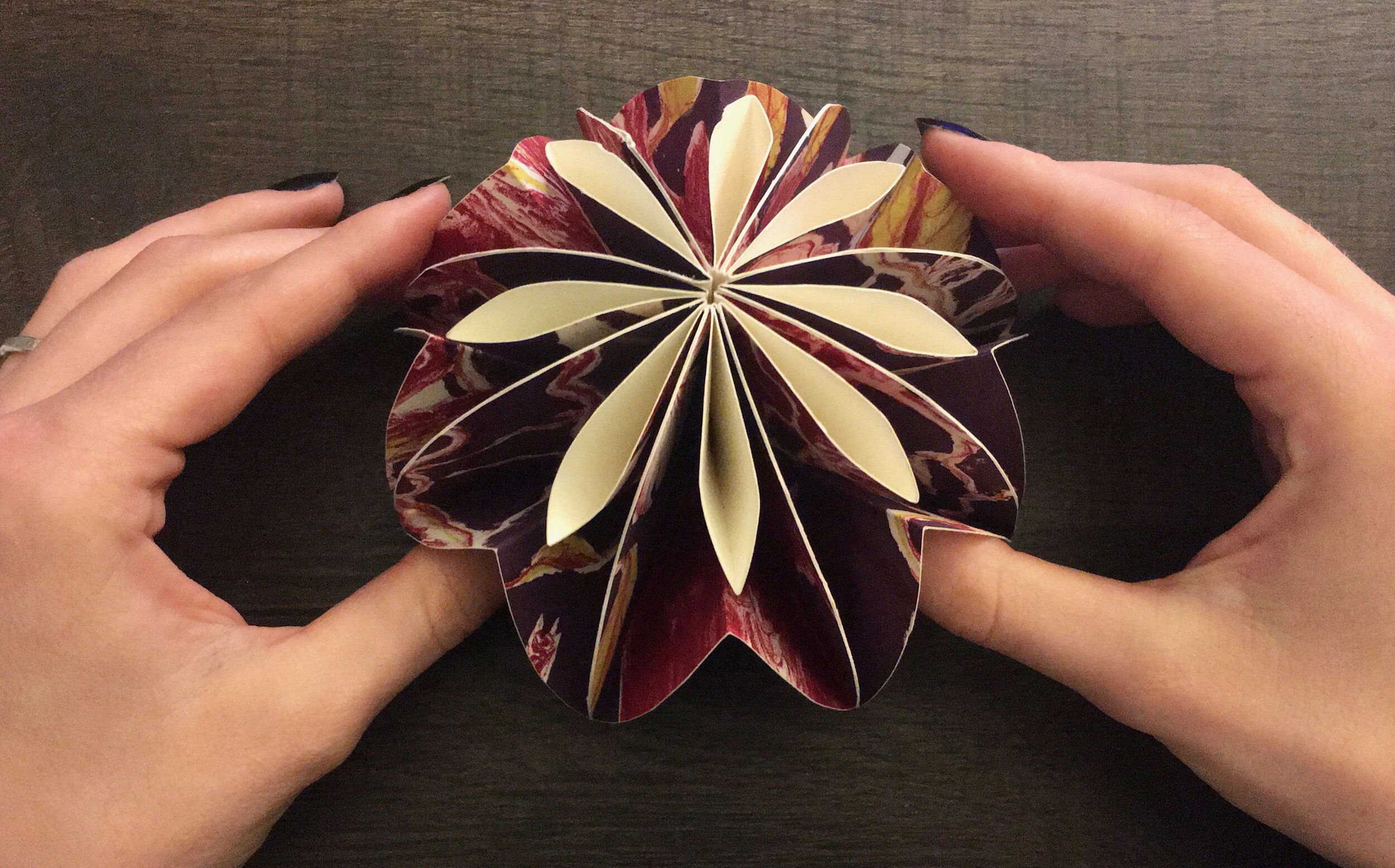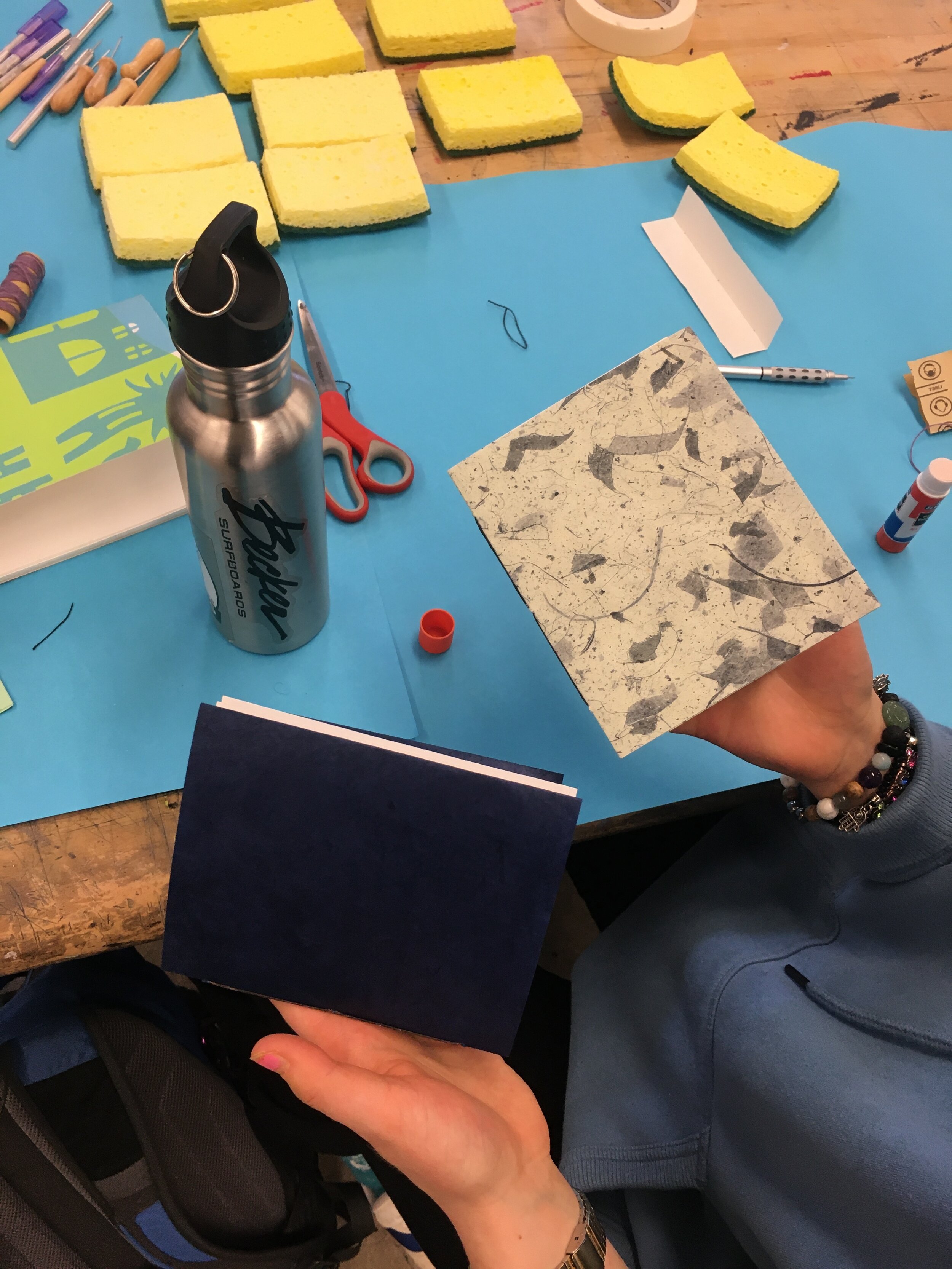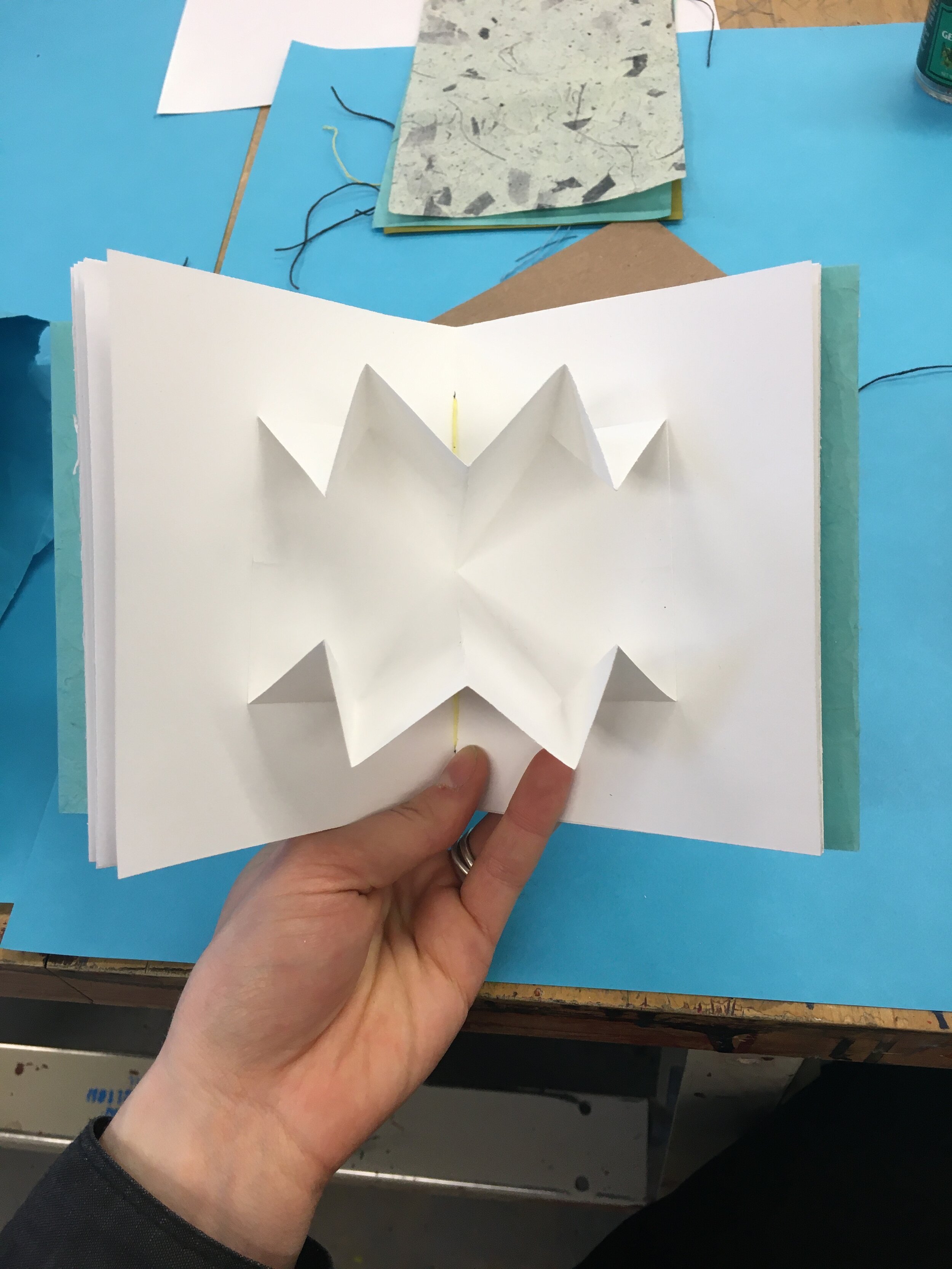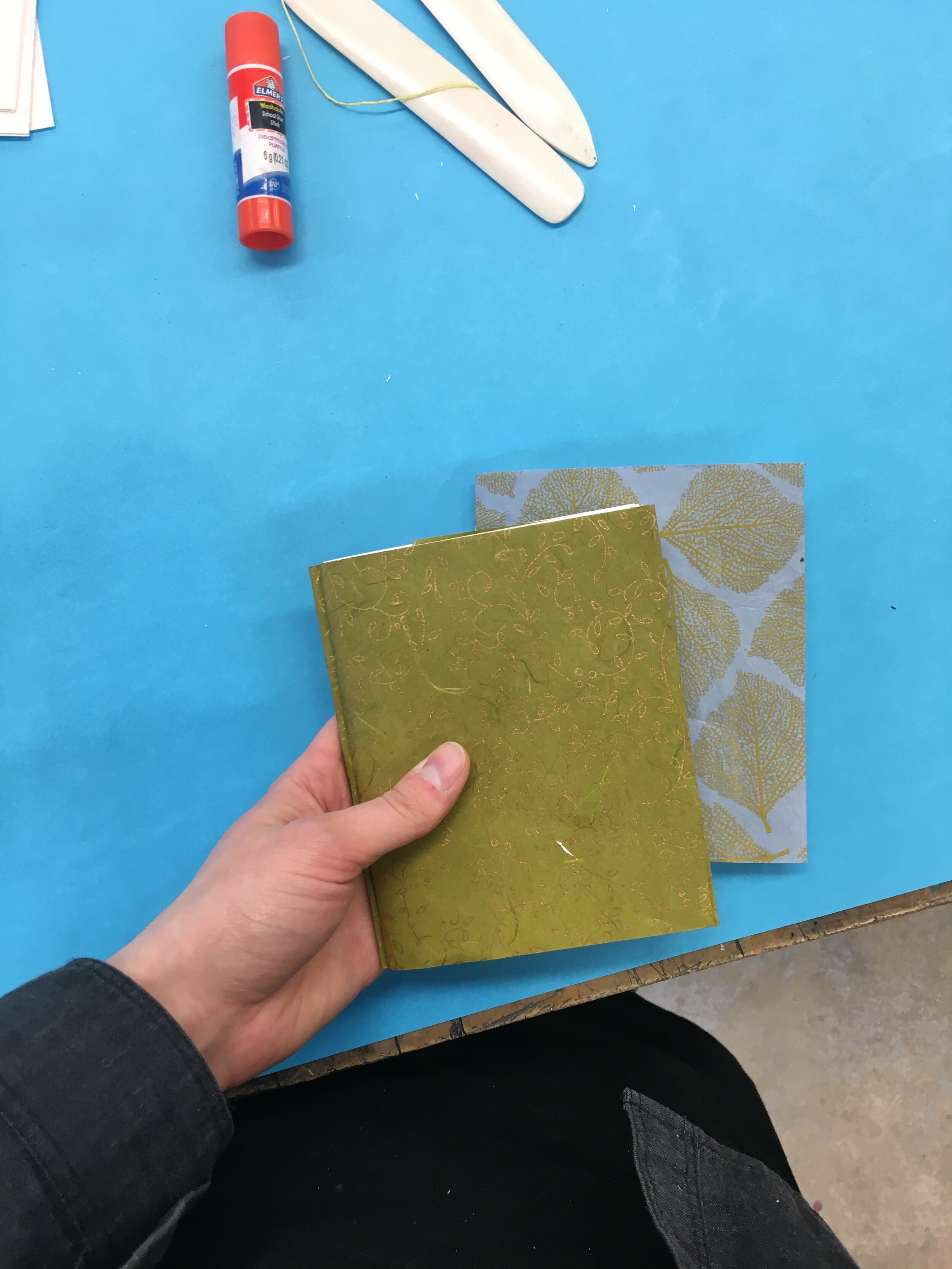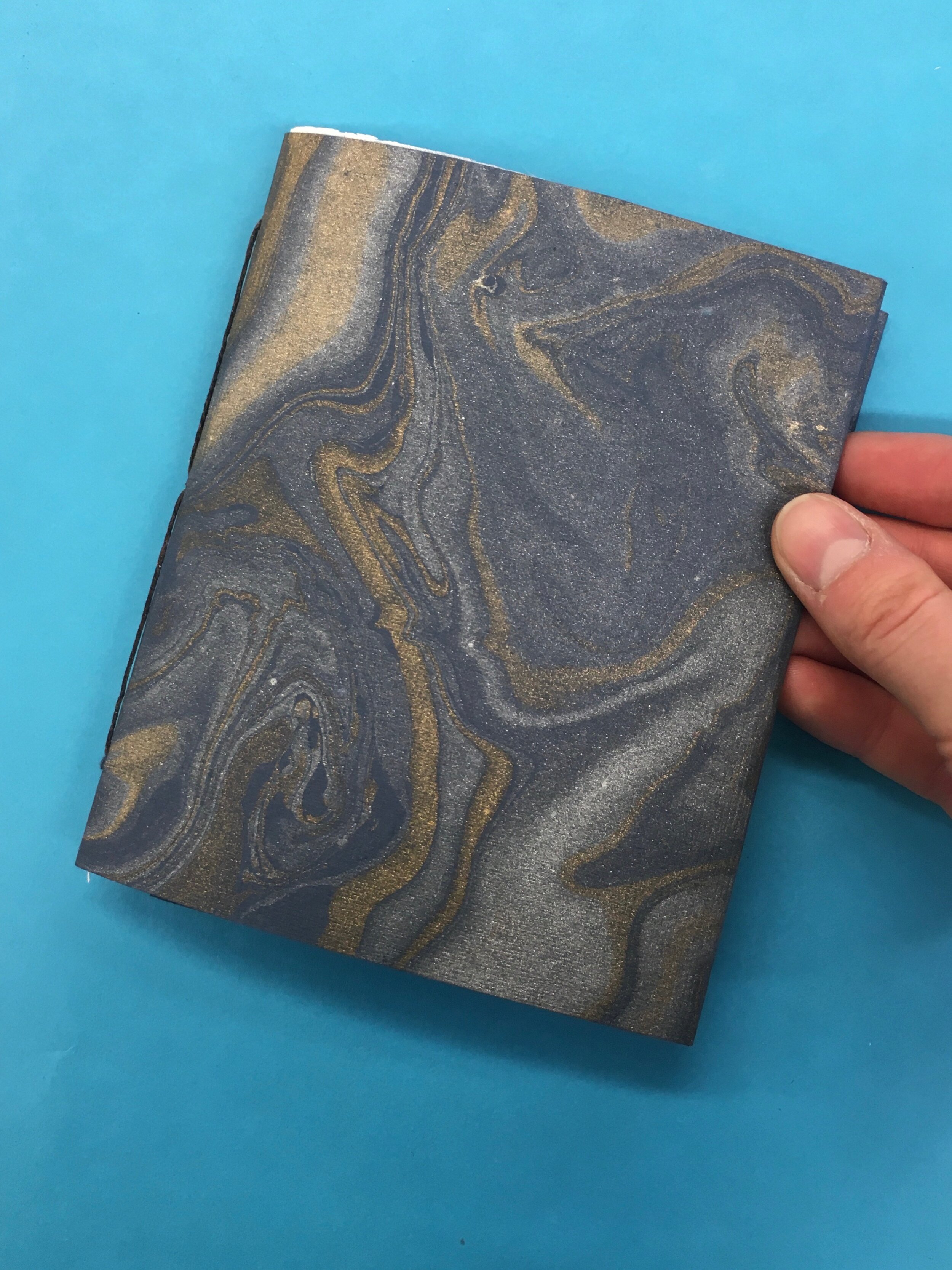Circle Fold Books
Grade Level or Age of Participant: age 5 - 95 (basically all ages)
Organization: Minnesota Center for Book Arts, “Fold-Along Friday” weekly virtual book arts lesson
MCAD Teaching Artist: Jamie Kubat
Number of Students: open (video demo, free for everyone)
OVERVIEW OF PROJECT
This project is a pre-recorded video that demonstrates how to make a folded circle book. This is a simple but elegant structure that can be used as a book with content or as a sculptural object. The demo is for MCBA’s Fold-Along Friday lineup, a virtual lesson format provided to their Facebook and Instagram audiences in response to the COVID-19 epidemic.
“BIG IDEAS”/ ESSENTIAL QUESTION(S)
This lesson provides a way for people to engage with MCBA through this time of social isolation. It is designed to support viewers/participants by giving them a thought provoking and enjoyable process to inspire them to create something new.
Additionally, the project supports an organization that gives so much to the larger arts community through their programming and access to studio space. This lesson fills a gap left by social distancing and our current inability to teach face-to-face.
STUDENT OUTCOME OBJECTIVES
Students will:
1. Construct a blank book
2. Develop content for the book if they desire
3. Adapt the lesson to their own needs or creative pursuits through experimentation
(The lesson provides a concrete way to accomplish the first step but the other two will be up to the viewer to pursue. Examples and verbal encouragement are provided for taking the content further).
PRIOR KNOWLEDGE
Basic knowledge of how to use a scissors to cut with and pencil to draw with is helpful. The rest of the steps are explained, such as folding paper, gluing, etc.
LESSON PREPARATION TIMELINE
By 4/16: submit lesson plan draft
By 4/19: create exemplars and set up space in my apartment for video. Experiment with video shots and photograph exemplars. Share demo ideas/footage with TA Development group.
By 4/25: Write script. Video draft edit and rework lesson plan.
By 5/1: Submit video lesson to Shelby and Madeline for upload on Friday 5/15.
EXAMPLES OF ARTWORK
I made several exemplars, which are included in a gallery below.
ADDITIONAL RESOURCES
Link to MCBA’s free Fold-Along workshops here.
The Art of The Fold, by Hedi Kyle and Ulla Warchol.
Making Handmade Books: 100+ Bindings, Structures & Forms, by Alisa J. Golden.
ASSESSMENT
I asked people to tag their work on social media so I could see what they make, and I received some feedback through both social media and email responses.
MATERIALS
Paper, enough for 8 circles in any size (suggested diameter of each circle is 4.5”)
Pencil
Compass or a bowl/other circular object to trace around
Bone folder, popsicle stick, ruler (or thumbnail) for folding
Glue stick, PVA glue, or other type of glue
Other paper and drawing materials for collage/content/etc. (magazines, handmade paper, old prints, dried flowers, watercolors, etc.).
Optional heavier paper for covers (will provide size recommended for cover based on size of pages, or a way to find that size)
VIDEO DEMO
LEARNING ACTIVITIES AND TIMING
1. Intro and talk about MCBA a bit and my role at MCBA/in this series of lessons. (2 min)
2. Cutting paper into circles (3 min; cut and fold most circles ahead of time and just demonstrate with one or two during lesson).
3. Folding the paper (4 min)
4. Gluing the pages together and gluing on a cover (8 min)
5. Wrapping up, asking people to support MCBA (Shelby requested, it’ll probably be specific to the version of the video I send them along with any other MCBA related info) 2 min
TEACHING ARTIST REFLECTION
What problems are anticipated with this lesson?
Timing and dealing with the video creation. Performing for a recorded video while home alone proved challenging but ultimately very worth the time and effort.
How does this project fit into overall curriculum planning for the subject areas?
It goes well with other books that MCBA shares in their youth curricula: simple, easy to adapt for a variety of content purposes, unique, and fun to make
How will your students’ work be shared with the community?
They can share it on social media or with friends/family if they want to!
The video I recorded for this lesson can also be found here, on MCBA’s Facebook page!







